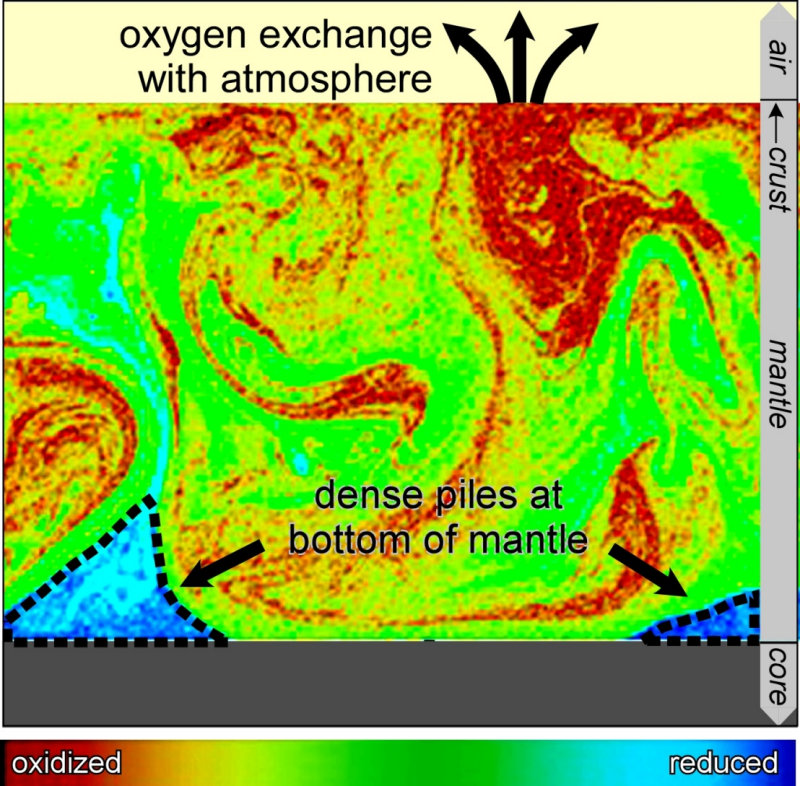
Redox-induced lower mantle density contrast and effect on mantle structure and primitive oxygen
Tingting Gu, Mingming Li, Catherine McCammon & Kanani Lee
Nature Geoscience doi: 10.1038/NGEO2772
http://www.nature.com/ngeo/journal/vaop/ncurrent/full/ngeo2772.html
An international research team involving Catherine McCammon reports in Nature Geoscience how mantle convection through Earth’s history can separate material based on its oxidation state and thereby influence the primordial atmosphere as well as the structure of the deep mantle. They conducted high-pressure experiments on bridgmanite, the mineral that makes up more than half of the Earth, using two samples, one made from glass under conditions with very little oxygen (“reducing”) and one made from glass under oxygen-rich conditions (“oxidising”). Overall the samples were similar, but had slightly different densities, where the reduced material was heavier than the oxidised material. They simulated mantle convection over the history of the Earth and found that a mixture of oxidised and reduced material will separate due to their different densities. Dense reduced material forms piles at the bottom of the mantle, while lighter oxidised material rises and can provide oxygen to the atmosphere, contributing to the habitability of the early Earth.

Dense reduced material sinks while lighter oxidised material rises in a simulation of mantle flow over Earth's history. Oxidised material can exchange oxygen with the atmosphere while reduced material forms piles in the deepest part of the mantle. Graphic by Catherine McCammon based on a computer simulation.
Tel: +49-(0) 921 55 3700 / 3766, Fax: +49-(0) 921 55 3769, E-mail: bayerisches.geoinstitut(at)uni-bayreuth.de